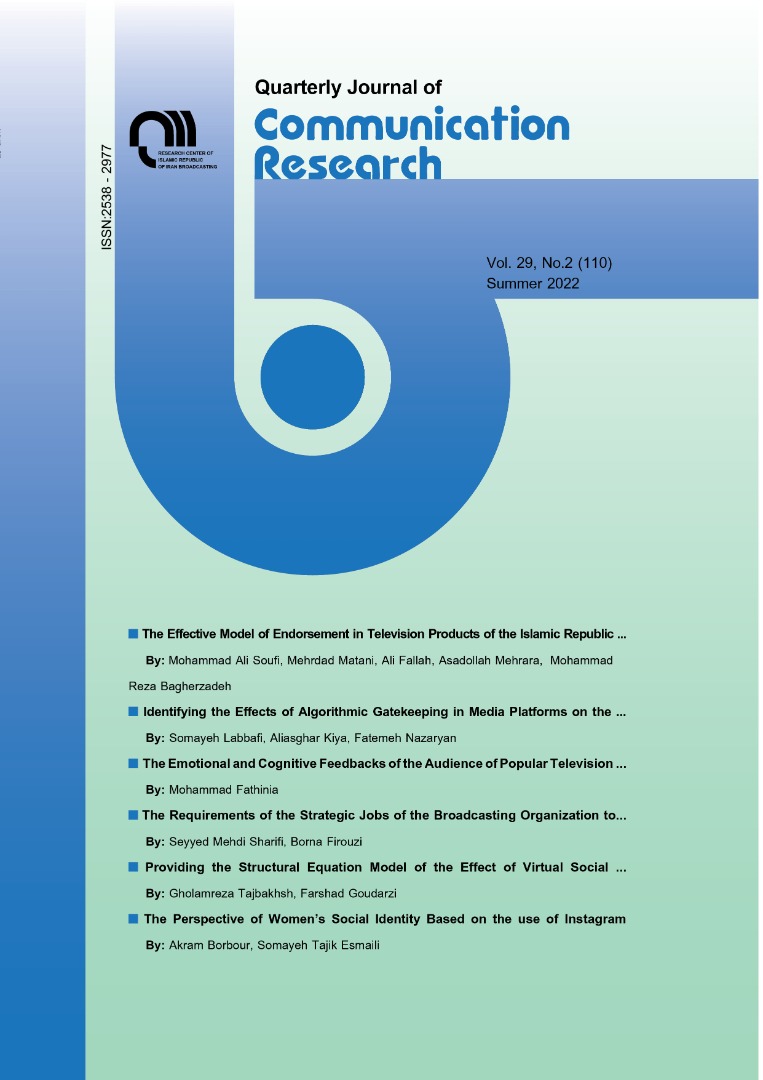Document Type : Original Article
Authors
1 Associate Prof. In Social Sciences, Faculty of Humanities, University of Borujerdi, Borujerd, Iran
2 Sociology
Abstract
Nowadays, youth identity in the country has become an important issue, and identifying the factors affecting the identity of the youth seems essential. The purpose of this research is to examine the effect of virtual social networks on the identity of young people. The method of the research was quantitative and and the statistical population includes young people aged 18 to 35 years of West Azerbaijan province who were randomly selected. Research data was collected using a researcher-made electronic questionnaire. The sample size was 383 people using Sample power software, which was increased to 400 people To increase accuracy. The research data was analyzed using Spss 26 software, and the structural equation model and model fit criteria were drawn and estimated with Amos Graphic 24 software. The findings of the research showed that the Pearson correlation between the cognitive and communication dimension of virtual social networks with the identity of young people is at a significant level. The communication dimension had the highest correlation with the religious dimension of identity, and the cognitive dimension had the highest correlation with the political dimension of youth identity. The results of multiple regression also showed that the dimensions of the independent variable of the research explain 67% of the variance and changes of the dependent variable. Also, based on the structural equation model of the research and according to the fit criteria, the empirical data of the research supported the theoretical model. In general, the results indicate that the two cognitive and communicative dimensions of virtual social networks have influenced the identity of the youth of West Azerbaijan province and have influenced the identity dimensions of the youth of this province; However, the effect of these two dimensions has been at a weak level.
Keywords
Main Subjects

